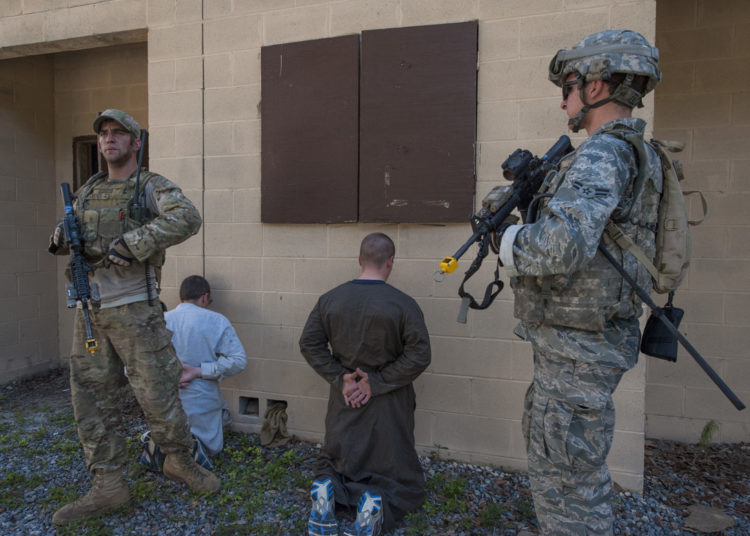In the Netflix series, “Daredevil,” superhero-lawyer Matt Murdock has an, arguably, unfair advantage over criminals in court: He can use his heightened senses to measure changes in a person’s biometrics like heart rate, perspiration and temperature. Over the years, he’s developed a pretty attuned understanding of how these physiological responses correlate with things like nervousness and deceit — making him a sort of walking lie detector test.
That may seem like the sort of far fetched concept you’ll only find on the pages of comic books (and in films and shows about the same), but SOCOM has recently begun testing a similar system for special operators in the field.
Public-private firm SOFWERX recently started testing on a “physiological analysis tool” aimed at helping to collect, analyze and leverage biometric responses in foreign contacts and targets while engaged in a dialogue with operators.
“We pulled together quite a few sensors,” SOFWERX chief technology officer Brian Andrews said. “Through radars, through video, you can tell heart-rate variability. You can get temperature from [the subject’s] body. You can do voice analysis.”
By combining the sensor readings with an AI processor, physiological responses can be translated into actionable intelligence. The system can’t tell for certain that a person is lying, angry, or nervous — but it can say that there’s a high likelihood that they are, giving the operator valuable information about the interaction in real time. This could help assess the credibility of the intelligence being provided, help determine friend from foe and even serve as a form of “lie detector” during questioning.
“We put a test guy up there [and] asked him some questions that made him fairly uncomfortable. Now, getting ‘intent’ is hard; but we could tell: ‘Hey, this person is nervous when you ask this question. Their countenance changed.’ Micro-expressions is another way to look at this.”
In a recent test, they used the system in a scenario where operators were engaging a group of village elders about ISIS recruiting in the area. The system collected data from the elders throughout the conversation. The data could be viewed in real time, but instead, was saved to be viewed afterwards in order to minimize distractions. Once the conversation was over, the operators were able to use the collected data to assess the efficacy of the dialogue. They used the biometrics collected through the sensors to determine if the village elders seemed to understand what was said and if they looked at the operators favorably or not.
This system is still in its infancy, and can really be seen as a part of a broader endeavor to use AI systems and newly emerging technologies to enable America’s special operations troops, not just in enhancing their lethality, but assisting them across the entire spectrum of military operations.
Already have an account? Sign In
Two ways to continue to read this article.
Subscribe
$1.99
every 4 weeks
- Unlimited access to all articles
- Support independent journalism
- Ad-free reading experience
Subscribe Now
Recurring Monthly. Cancel Anytime.









